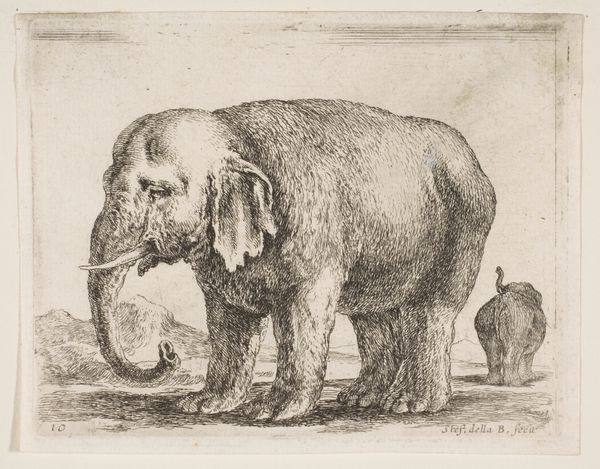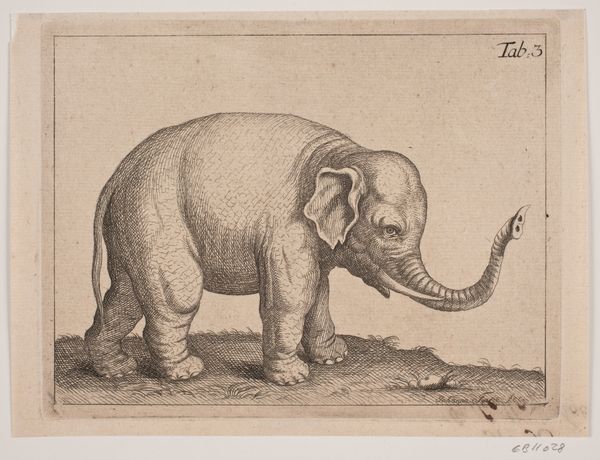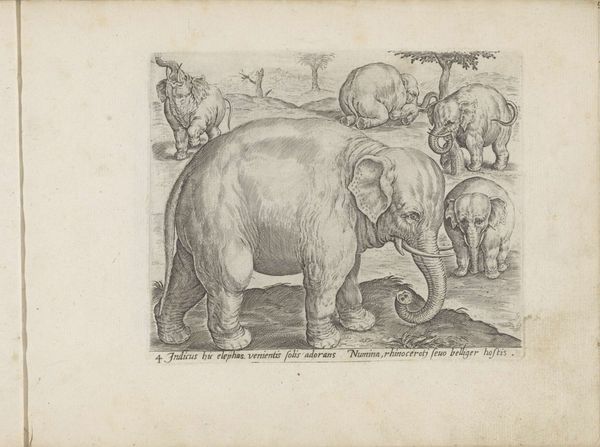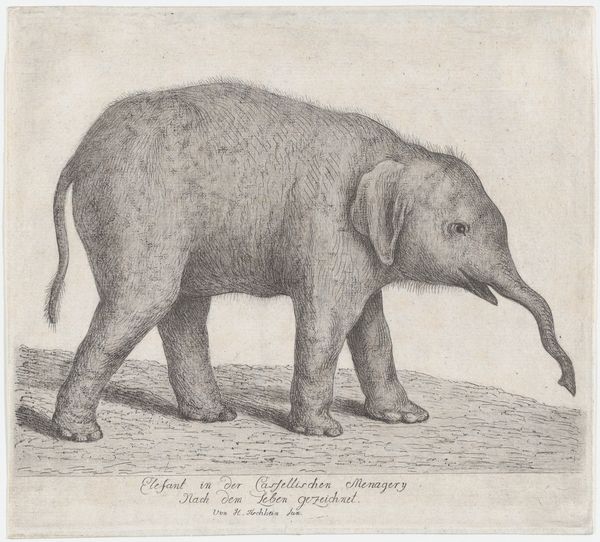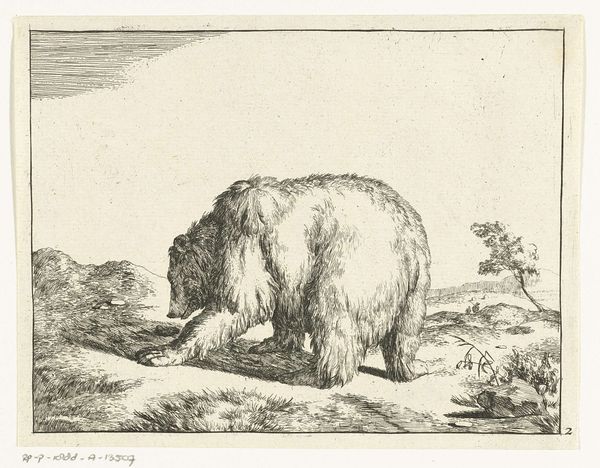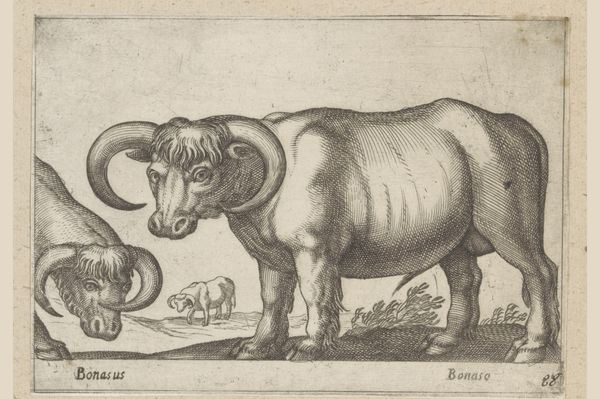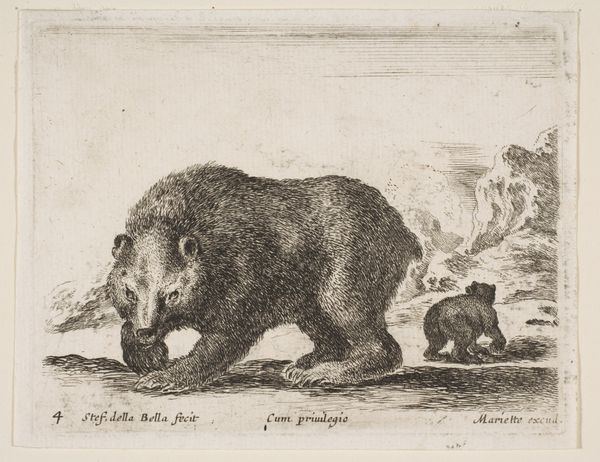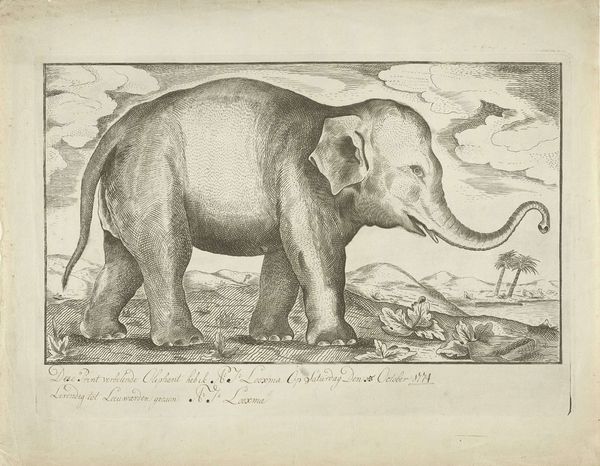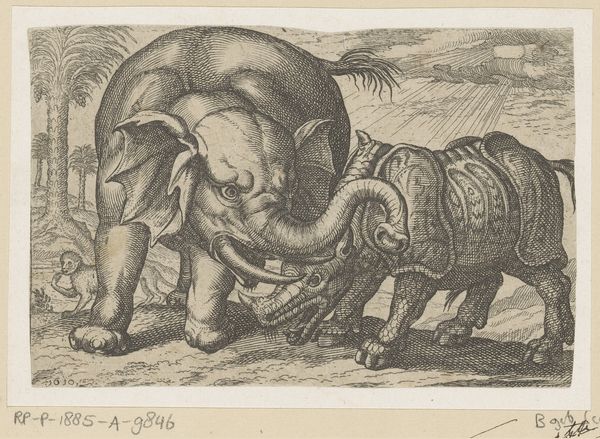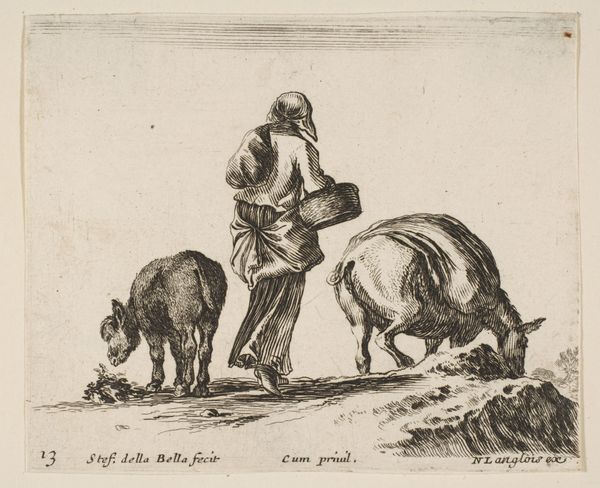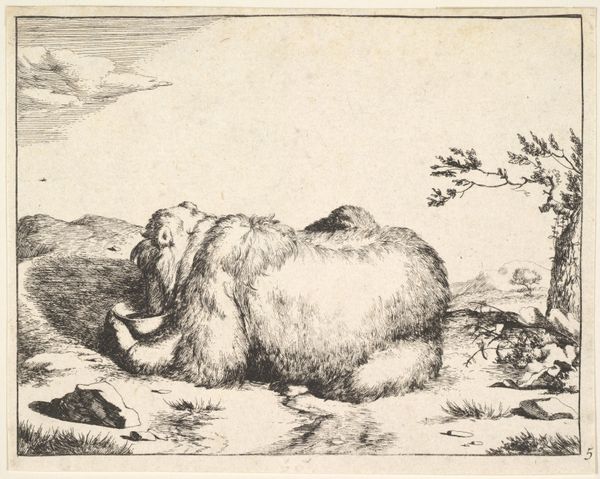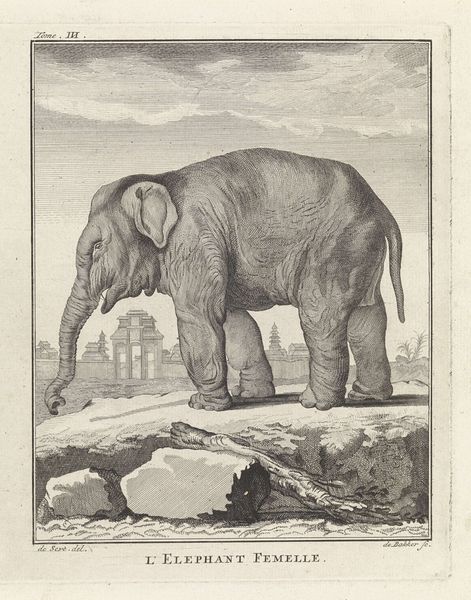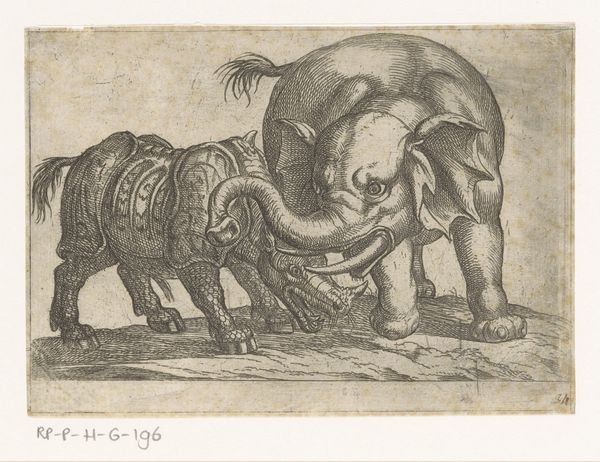
Plate 16: an elephant in center, his mahout standing to the right wearing an Oriental costume, another elephant to left in background, from 'Diversi capricci' 1639 - 1649
0:00
0:00
drawing, print, etching, engraving
#
drawing
#
baroque
#
animal
# print
#
etching
#
figuration
#
orientalism
#
genre-painting
#
engraving
Dimensions: Sheet: 3 3/8 × 3 7/8 in. (8.5 × 9.8 cm)
Copyright: Public Domain
Curator: Let's take a look at Stefano della Bella's print, “Plate 16: an elephant in center, his mahout standing to the right wearing an Oriental costume, another elephant to left in background, from 'Diversi capricci'”. It dates roughly between 1639 and 1649, a fascinating period in European printmaking. Editor: The sheer scale of that elephant in the foreground is striking! And the cross-hatching gives the skin such a palpable texture. It feels heavy, almost melancholic, despite the rather whimsical title of the series. Curator: Indeed. Della Bella was working within the Baroque style, but here, he seems to be toying with Orientalist themes, likely fueled by increased trade and diplomatic missions to the East. Prints like this circulated widely and shaped European perceptions of the “Orient.” Editor: The elephant itself carries enormous symbolic weight, doesn’t it? Think of its association with royalty, wisdom, and even divinity across various cultures. Its presence dwarfs the mahout, which suggests a meditation on power, control, and the exotic “other.” The slightly slouched figure of the trainer almost humanizes him, even as his “Oriental” costume further others him to the viewer. Curator: The ‘capricci’ or ‘fancies’ of the title allows Della Bella some freedom. This isn’t meant as documentary. He's constructing an image informed by both observation, probably from seeing exotic animals brought to European menageries, and from broader cultural assumptions about the East. And how that imagery relates to power and control in the period in which this work was circulating. Editor: Note also how the lines create a kind of visual hierarchy. Our eye is first drawn to the massive elephant, then down to the relatively diminutive figure of his keeper, leading us finally to the more mysterious, diminutive animal far behind them. A visual pathway carefully leading to that notion of perceived power relations? Curator: I find the seeming contrast intriguing between the animal as symbol of the orient against how, as it walks within the frame, that it speaks also about Europe and of Western exoticism in those times. Editor: Yes, Della Bella gives us more than just a depiction. The elephant is a conduit to exploring wider, often conflicted, themes. Curator: It leaves you to ponder, even today, the relationship between observer and observed. Editor: And the lasting echoes of such representations.
Comments
No comments
Be the first to comment and join the conversation on the ultimate creative platform.
